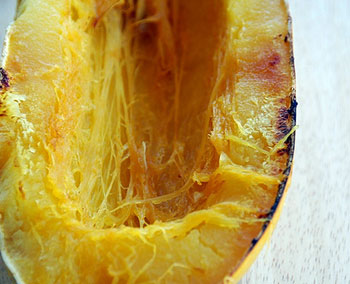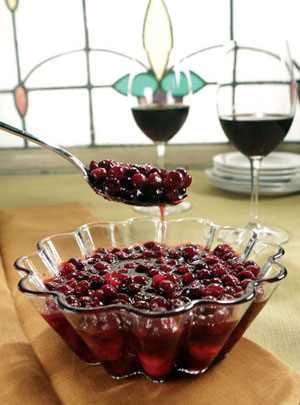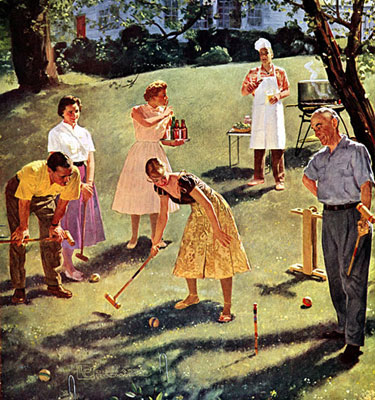 No, this is not a picture of a sea anemone. It's spaghetti squash. And though my mom doesn't like it, she makes it all the time for my dad since it's his favorite type of squash. Her favorite, by the way, is buttercup. I know this because the three of us have the same conversation every year as if it's a revelation:
No, this is not a picture of a sea anemone. It's spaghetti squash. And though my mom doesn't like it, she makes it all the time for my dad since it's his favorite type of squash. Her favorite, by the way, is buttercup. I know this because the three of us have the same conversation every year as if it's a revelation:
Dad: "What did you buy at the farmers' market this week?"
Me: "Some butternut squash."
Mom: "Ooh, yeah? I love butternut squash. But you know what's even better? Buttercup. You should try it."
Me: "Yeah, Mom, I have tried it, but I don't like it as much as butternut."
Mom: "How could you not like buttercup squash?!"
Dad: "You know what the best squash is? Spaghetti squash. Your mother makes it with tomato sauce and cheese. Oh, I love it like that. You should try it."
Fall
Fall
Curious about Mom's Epicurious recipe
From the LA Times
 My mom has a recipe on Epicurious. At first I found that amusing. Epicurious, after all, is the holy grail of recipe websites, the collected works of some of the best food writers in the country. And, to put it most kindly, my mom was not a gifted cook. At least not by the definition we most usually apply today.
My mom has a recipe on Epicurious. At first I found that amusing. Epicurious, after all, is the holy grail of recipe websites, the collected works of some of the best food writers in the country. And, to put it most kindly, my mom was not a gifted cook. At least not by the definition we most usually apply today.
Oh, it's a good recipe. Maybe a great recipe. We printed it in the Los Angeles Times for the first time in 1992 and most recently in 2000, and I still get calls and emails every Thanksgiving asking for Mom Parsons' Cranberries.
It has just the right balance of sweet and tart, with the spice of cloves, cinnamon and allspice coming up from the background. I can — and sometimes do — drink the syrup straight. The texture is like a loose jelly, but the cranberries are cooked briefly, so they still have pop. It's so good that I know my mom couldn't have thought it up herself.
When I say something like that, people sometimes gasp. It sounds cruel, particularly these days when culinary ability is regarded as being next to godliness.
But even if my mom had had the inclination to be a good creative cook, she probably wouldn't have had either the time or the resources. She was too busy raising four kids on my dad's Air Force salary — for most of his career a modest paycheck that still required us to pack up and move almost every year.
Broccoli and Gruyere Gratin
 This is, without a doubt, going on my Thanksgiving table. What is it about Gruyere cheese that is so dang good? I love its assertiveness on the palate.
This is, without a doubt, going on my Thanksgiving table. What is it about Gruyere cheese that is so dang good? I love its assertiveness on the palate.
With that said, "Heavens to Murgatroyd" my friends, this is one yummy gratin. I am truly in love with it. You must make this or you will forever be sorry. No, I'm not being dramatic, just assertive, like the cheese.
The Wildboar, who would never go out of his way to eat broccoli, wanted more and more. I knew it was good.
This is another dish I cannot be alone with. I would eat all of it and then pick the brown bits of cheese from the sides of the pan. No joke.
If you are celebrating Thanksgiving elsewhere and need to bring a side dish, I'll give you instructions on how to prepare it for travel. BUT don't wait for Thanksgiving to make this, have it today!
Reduced Calorie Pumpkin Bread
 Who thought reduced calorie pumpkin bread could be so good? Well, I'm hear to tell you it is. Aren't you lucky? Anyway, my bestie's mama, Sharon (Hi Sharon!) tweaked up a recipe and came up with this little gem (I tweaked it a tad bit more as well). Anyway, it's moist, it's pumpkin-ee and a perfect fix with coffee.
Who thought reduced calorie pumpkin bread could be so good? Well, I'm hear to tell you it is. Aren't you lucky? Anyway, my bestie's mama, Sharon (Hi Sharon!) tweaked up a recipe and came up with this little gem (I tweaked it a tad bit more as well). Anyway, it's moist, it's pumpkin-ee and a perfect fix with coffee.
So here's the thing, I was looking at nutritional information for regular, full-calorie pumpkin bread and it averages about 179 calories per slice. Now, they consider one slice to be 1 ounce in terms of weight. I can tell you right now that no one ever cuts a 1 ounce slice of pumpkin bread and considers that a serving. It's minuscule and definitely wouldn't hold a slab of butter. This means that a regular slice, one that you would just normally cut and looks like "normal size" weighs about 2.4 ounces (based on a 12 serving loaf made in an 8 x 4 pan). So one slice of regular pumpkin bread is about 429 calories. OUCH!
So this lovely recipe will cut your calories in half, coming in at only 228 calories per 2.4 ounce slice. That's a huge savings. Now, since you are saving so many calories, you can slather on the butter..he-he. Or cream cheese, or...or...
Autumn Veggie Soup
 Roast em and stew em - that's all there is too em!
Roast em and stew em - that's all there is too em!
I don't know about y'all, but I roast just about everything I can. Veggies, fruit and meats all get nice and toasty and caramelized from high heat and a little salt to draw out the moisture. Roasting veggies has become my MO for getting picky eaters (y'all know who you are) to eat all kinds of veggies. Broccoli, cauliflower, Brussels sprouts, okra, zucchini, squashes of all sorts and onions too all find their way into the oven and onto plates. Roasted sweet potatoes with rosemary and onion... Oh my my!
I love, love, love vegetable soup. But I have a few stipulations to this stew of sorts. I don't care for potatoes in my veggie soup - can't say why exactly but I don't. Potato soup though is perfectly fine!
More Articles ...
Welcome to the new One for the Table ...
Our Home Page will be different each time you arrive.
We're sure you'll find something to pique your interest...


